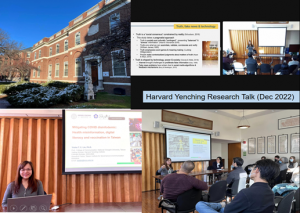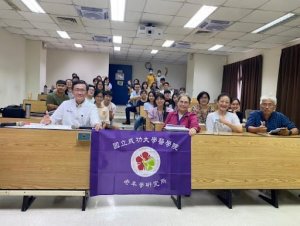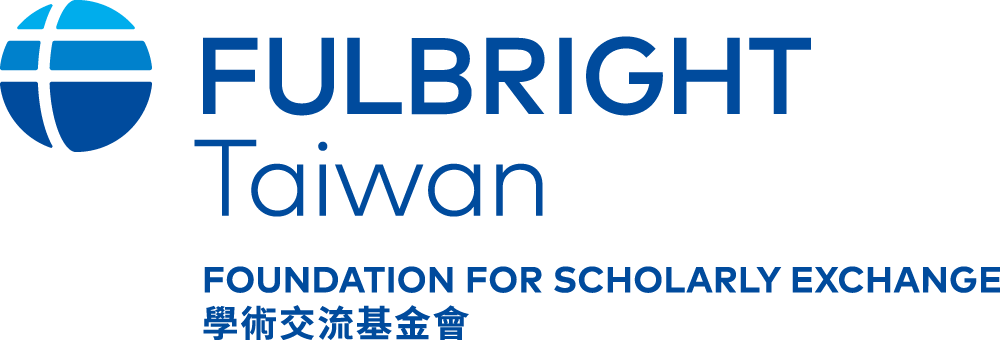A case study provides the opportunity to delve deeper into the perceived advantage that China wields over the United States in monetary power. By analyzing a real world case of Chinese monetary power, this research aims to answer the questions: when is economic coercive action in the Chinese-United States relationship likely to succeed, and why aren’t there more instances in which China tries to make use of its theoretical leverage. Over the course of the case studies, deeper analysis presents a more complex and complicated picture of the broader and more definitive areas of leverage presented in the analysis of economic realities. This suggests that theoretical advantage, while supported by economic figures, can often be hard to capitalize on in reality.
In the case of China’s monetary power, this research makes use of “the most likely case” of economic coercive action (Eckstein, 1975). As such, this research aims to take a case of Chinese utilization of economic power that has a high likelihood of success and explore how successful it was in reality as well as what were the circumstances of its failure or success. This falls short of an all-out attempt to disprove the theoretical advantage, as is often the aim of similar studies of “most likely cases” (Gerring, 2007). Instead this case suffices to show the complexities and difficulties in wielding economic coercive power and the limited returns that come with high risk.
The case chosen is the selling off of United States Treasury Securities by the Chinese government in 2015 in an effort to reevaluate the Yuan. This case study can be considered a major development in the Chinese–U.S. economic relationship since the measures taken on the Chinese side were drastic, and it led, in part, to the ascension of the Yuan as a world reserve currency.
The devaluation of the Yuan was all the more shocking because “during the 1997 Asian financial crisis, China’s economic situation was much worse than it is today, but the government still resisted the temptation to devalue the yuan – and the country managed to emerge from the crisis virtually unscathed” (Yongding, 2015). During that time, China recognized that devaluation would mean more uncertainty in the Asia Pacific region, and perhaps loss of investment in their own market; furthermore, a devaluation at that time would make exports less costly therefore hurting the recovery of the worst effected economies such as Thailand, Korea, and Malaysia (Halloran, 1998). This means that the August 2015 devaluation connotes a different thinking in currency policy, mainly that there is less focus on investment flows into China, and more of an emphasis on stabilizing rapidly falling exports and the low asset prices needed to grow internal demand. Furthermore, this change in policy shows how much the Yuan and the Asian Pacific economic situation has changed. According to the World Bank, the Yuan’s centrality is already evident in the East Asian Region, and a number of key Southeast Asian countries currencies are now linking their exchange rate more in tandem with the Yuan’s value than with the United States’ dollar. This means more freedom in Chinese monetary policy from foreign evaluations (World Bank, 2011).
Lastly, this case was chosen because it is generally difficult to prove instances of monetary power. This case is really the only one after the 2008 global financial crisis that we can definitively say China’s government chose to influence the Yuan’s value, and study what effect that is having on the United States economic policy. If it were easy to prove China’s currency manipulation, there would probably be a clearer and more unified U.S. response. This case will not engage in the unsubstantiated claims of politicians and United States media outlets that China is undervaluing its currency, and it will not follow the Chinese government line that China’s low exchange rate is a result of many other factors outside of the government’s control. Instead, this research takes the opposite approach of finding the clearest example of currency reevaluation and extrapolating what role China and the United States played. Furthermore, there are few proven instances of monetary power on the side of China, this not only makes studying Chinese monetary power difficult, it begs the question why doesn’t China press harder on its advantage?
Chinese Grand Strategy
It is prudent to begin with an analysis of Chinese grand strategy with an eye toward its monetary policy and the centrality of the Yuan. For this research, it is sufficient to look at Chinese Grand Strategy to answer the question that Cohen lays out for analyzing a country’s aims in utilization of international monetary power: Is it seeking influence or autonomy? According to Cohen, influence is defined as “the ability to shape events or outcomes,” naturally this means controlling the behavior of other actors. Cohen goes on to say: “An actor, in this sense, is powerful to the extent that it can effectively pressure or coerce others; in short, to the extent that it can exercise leverage or managerial authority. As a dimension of power, influence is the essential sine qua non of systemic leadership.” That is to say that influence is a necessary condition to a country wanting to control a system or achieve currency centrality. This is in contrast to autonomy in that autonomy is “power as a capacity for action.” This is the same as having the freedom to control one’s own monetary policy without being overly concerned about other countries’ reactions. Cohen says, “in this sense, power does not mean influencing others; rather, it means not allowing others to influence you – letting you have your way” (Cohen, 2008, p. 457).
From a certain perspective, it can be difficult to assess what the objectives are for the Chinese government; however, there are prerequisites to a country achieving either – or both because the two forms of Cohen’s international monetary power aren’t mutually exclusive – influence or autonomy. Therefore, in this section, we can follow Chinese monetary policy to assess whether influence or autonomy is getting the higher priority. Kirshner, himself, recognizes the importance politics and the Chinese government’s preferences will play in the future of the Yuan stating, “the outcome will be determined more by politics than economics, as both the RMB optimists and pessimists explicitly recognize” (Helleiner & Kirshner, 2014). If China was seeking more influential international monetary power and the centrality of the Yuan it would necessitate deep financial reforms allowing the currency to be held in more liquid markets with full currency convertibility (Subramanian, 2011). Likewise, if China is seeking more autonomy in its international monetary power, there will be more policies to reshape international economic structures set up by the United States to if not take away United States advantage, then to voice more of its concerns and alleviate a certain Chinese disadvantage. Also, China would move to uncouple their currency from the dollar maximizing monetary policy autonomy.
Understanding Chinese priorities is very much a practice of following the changes in economic realities. This is why a most recent, post-2008 global financial crisis case is necessary. In the past, China has played an important role in supporting the status quo, “with its accumulation of massive dollar reserves, China has reinforced the dollar-based international monetary order” (Helleiner & Kirshner, 2014). This is representative of a time in which Chinese upholding of the system was beneficial to its own development. At that time, China was in little position to exercise influence. It is easy to say that Chinese purchasing of vast dollar reserves was an effort to accumulate autonomy, wherein as Cohen explains, there is a quiet power in having enough reserves to decide when currency reevaluation occurs. Cohen points out that China has long been the target of United States (and others) to revalue their currency. China has largely ignored these pleas; cushioned by its large reserves, the Yuan “appreciated in small steps by little more than 15 percent – far short of what most observers think is needed to make a real dent in China’s trade surplus” (Cohen, 2008).
However, during the 2008 global financial crisis, financial instability and dollar weakness meant that China had its first opportunity to destabilize the system or at least play spoiler by denying further investments. Instead, much as it did during the Asian financial crisis, China opted for stability. China instead came to the system’s rescue providing crucial support for the dollar, providing further funding for the deficits the United States would need to deepen for the economic bailout and recovery (Helleiner, 2014). This provides compelling evidence that China’s priority is not in wielding influence, but in providing stability. Daniel Drezner claims the most that China asked for was guarantees on existing investments and assets, and that none were given. China and the United States acted in common interest, a bailout was given helping the United States economic recovery while also protecting Chinese Sovereign wealth investments in United States banks (Drezner, 2009). Again, this is less a strong show of influence and leverage and more of the passive power Cohen alludes to in his assessment of monetary autonomy that comes with little risk, but provides protection during uncertain economic times and instability.
Since the global recession, many scholars see more assertiveness in Chinese international monetary policy and its accumulation of monetary power. Sticking with this basis of analyzing Chinese strategy, it can be difficult to assess whether this is an effort to solidify its monetary autonomy or a power grab to increase influence and help the Yuan establish itself as the world’s central currency. Indeed, not long after the worst of the financial turmoil was over, and economic recovery was still fragile, Zhou, China’s central bank governor, released an essay, “Reform the International Monetary System” calling into question the stability of a world monetary system that relies so heavily on the dollar. While some scholars saw this essay as a termination notice on dollar’s supremacy, a close reading suggests concerns about the system’s inherent conflict that puts domestic monetary goals at the whim of the dollar currency market, which is particularly burdensome to developing economies. Instead, Zhou’s qualms with the international monetary system are more theoretical (based on the Triffini Dilemma) having to do with problems of autonomy. Idealistically, he proposes, “an international reserve currency that is disconnected from individual nations and is able to remain stable in the long run, thus removing the inherent deficiencies caused by using credit-based national currencies (Zhou, 2009). It seems that his call is less for an international monetary system built out of and to the benefit of the yuan’s influence; instead, it is a call for greater autonomy and balance brought about by “gradual change that built on past efforts to strengthen the IMF’s Special Drawing Rights” (Helleiner & Kirshner, 2014).
Taken chronologically, since the beginning of China’s rise and the yuan’s internationalized beginnings, the Chinese government has placed its priorities on autonomy and monetary stability over accumulating or exercising fleeting opportunities for influence. However, there is another level of analysis, beyond that of monetary policy and extrapolating intentions, which also lays credence to the argument that China’s priority and monetary strategy is placed on stability and autonomy as well. The Chinese Communist Party’s power is largely legitimated by China’s continued GDP growth and economic stability. “The leaders of Chinese Communist Party are especially sensitive to encroachments on their policy autonomy, and place a great premium on stability, which suggests that they will be anxious about the extent to which they loosen their control over their currency. This will shape the future of the RMB” (Helleiner & Kirshner, 2014). China is well acquainted with economic turmoil and the devastation that accompanies it, both for the common people and political elites, and keeping that uncertainty and instability at bay is of paramount concern. Steinberg, furthers this argument saying, “Two different types of political actors are likely to advocate for reserve accumulation: those whose careers depend on financial stability and those with stakes in export-oriented industries” (Steinberg, 2014). Of course, both of these point to China.
Understanding the history of Chinese monetary policy helps explain why there are few instances of overt efforts to utilize leverage to influence foreign countries policy. Such action could trigger retaliation, destabilizing the world monetary system. This is quite the opposite of what China has shown to be its priority for over twenty years. However, this does lead to the 2014-2015-yuan reevaluation as well as the selling off of United States Treasuries, and the yuan’s rise to world reserve status. This, seemingly, is a departure from the past intentions of establishing autonomy in monetary policy and domestic influence, and more of an exercise of influence and push for yuan centrality. Actually, as is shown in the next section, this is more of an exercise in the new autonomy China has found in its domestic monetary policy, and the objectives largely remain the same: stability both economically and politically, at home and abroad; strategic uncoupling from the United States; grow domestic economic strength.
China’s Monetary Policy after 2014
At the beginning of 2014, the yuan began to depreciate. In late February, a fourteen-year appreciation turned around and began a slide that the Chinese government has taken measures to manage. First, the steps China has taken since the yuan’s turnaround:
- Feb-25 2014: People’s Bank of China makes decision to set sequentially lower reference rates, and intervenes in the spot market to weaken RMB (Affairs, 2014)
- Mar-17 2014: China widens the trading band to +/- 2 percent (Holodny, 2016)
- Aug-11 2015: China adjusts exchange rate devaluing the yuan by nearly 2 percent. Currency falls 1.8 percent its biggest fall since China establishes currency market (Lu & Sweeney, 2015)
- Sept-10 2015: Foreign central banks and sovereign wealth funds are allowed to enter onshore currency market (W. Zhang, Cao, & Yeung, 2015)
- Sept-11 2015: State Administration of Foreign Exchange will conduct checks on firms’ foreign exchange buying to prevent speculation on yuan depreciation and prevent illegal cross-border money transactions (Lu & Sweeney, 2015)
- Nov-30 2015: CNY included in IMF Special Drawing Rights (IMF, 2015a)
- Dec-11 2015: New trade-weighted CNY index introduced measuring yuan against basket of currencies (Wei, 2015)
- Dec-25 2015: AIIB articles signed by representatives from 57 countries (AIIB, 2015)
- Jan-1 2015: Foreign exchange reserves fell $512.7 billion in 2015 (Noah, 2016)
While in no way exhaustive, this timeline highlights the key points and facts of the Chinese government’s monetary policy. What they all have in common is an emphasis on stability and departure away from the dollar.
The first of these events is the most confounding as the trigger for yuan depreciation was Chinese made. Indeed, right after the move to depreciate the yuan, many analysts claim that it was a move to bolster newfound investments into China hoping companies would buy-in while the yuan was, momentarily, low. However, this was more of a move to yield to economic factors. After “18 months of sustained appreciation,” the yuan began to slide lower.
The signs leading this adjustment are two-fold. First, China’s economic slowdown, while not great—only 7.7% to 7.4 %—created many problems in the financial and banking sectors. Consumer price inflation had already dropped significantly, undermining the ability for companies to make profits on domestic consumption, something that was a high priority for a more sustainable and autonomous development model. If domestic profits slumped as a drop in consumer price inflation dictated, that model would be impossible to achieve (Economist, 2015). Second, China’s high foreign direct investment inflows since 2009 were unsustainable, and largely a symptom of low or negative interest rates being pushed in Japan, Europe, and the United States, and of an artificially high yuan that benefited from promises of stability. According to a Report to Congress on International Economic and Exchange Rate Policies:
For more than a year, market participants – particularly Chinese firms operating in both the onshore and offshore markets – had been able to profit from the combination of high domestic RMB interest rates, low dollar borrowing rates, and a steady and predictable pattern of RMB appreciation. In fact, China’s exchange rate volatility declined last year, with inter-day and intra-day movements of the RMB getting significantly smaller during the third and fourth quarters of 2013. Expectations of continued low volatility created a clear incentive for firms to borrow dollars at low interest rates and invest the funds in China, which fueled the large capital inflows. (Affairs, 2014)
Meaning, of course, that the promise of low volatility couldn’t be kept after the faucet on inflows was turned off and the high liquidity this provided the market was lost. Namely, when talk of interest rate hikes began in the United States and economic prospects were looking up elsewhere, the first of China’s capital outflows began.
Again, from one perspective, this move to change the yuan’s reference point allowing for the depreciation of the yuan is a confounding one, but it needn’t be regarded as predatory. This would be a misinterpretation of the facts, while some saw it as a deliberate move to depreciate the yuan, artificially boosting growth and undermining Western economies, the yuan was not under-valued as they claimed, but artificially high. While this was a move in response to symptoms caused by policies of “quantitative easing” and low interest rates in Western economies, it certainly wasn’t with the intention of starting a currency war. Indeed, Rickards argues that if there were the beginnings of a currency war, it had started at the hands of the United States:
Quantitative easing could be used by the Fed not just to ease financial conditions in the United States but also in China. It was the perfect currency war weapon and the Fed knew it. Quantitative easing worked because of the yuan-dollar peg maintained by the People’s Bank of China. As the Fed printed more money in its QE programs, much of that money found its way to China in the form of trade surpluses or hot money inflows looking for higher profits than were available in the United States. Once the dollars got to China, they were soaked up by the central bank in exchange for newly printed yuan. The more money the Fed printed, the more money China had to print to maintain the peg. China’s policy of pegging the yuan to the dollar was based on the mistaken belief and misplaced hope that the Fed would not abuse its money printing privileges. Now the Fed was printing with a vengeance. (Rickard, 2011, p. 135)
Therefore, who can blame China for taking preliminary measures to combat the negative inflation this caused. It was less of an act of coercion than it was an act to preemptively combat an excessively high yuan evaluation that was having negative effects on the domestic economy.
This, along with the widening of the trading band to +/- 2 percent, which doubled the allowed movement it had against the dollar while still maintaining the peg, weren’t big enough moves to eliminate the over-valuation, meaning more actions were necessary. However, such moves were impeded by continued threats of capital flight. It has long been the rule of thumb that ordinary people were not allowed to convert more than $50,000 worth of Chinese yuan into foreign currency per year, and this remains true. However, Chinese officials have made it harder to convert even that much, and citizens and business people alike have moved to circumvent these rules (Hewitt, 2015). Essentially, China finds itself trapped in an economics problem involving the impossible trinity. “They cannot achieve a stable currency, the free flow of capital, and an independent monetary policy all at once. Since China has tightened its control on capital, it now much choose between stability in its currency or its monetary policy” (J. Zhang, 2016). It is clear that China needs the free flow of capital into the country, but it can’t abide the free flow of it out; furthermore, to contend with its largest short-term and long-term objective of ascending to IMF Special Drawing Rights, China is required to allow greater market forces to come to bear in its currency evaluations.
As China battles with its priorities, the capital continues to flow out. What started in 2014 has increased through 2015 and 2016. Attempts at stemming it, such as the State Administration of Foreign Exchange (SAFE) conducting checks on financial firms’ compliance to regulations, or attempts at counteracting the outflow by encouraging greater inflows like those that took place in September 2015, have done little to alleviate the problems capital flight presents. The earlier theoretical model of monetary power and China’s vast reserves as a tool of economic coercion don’t take into account the dangers of capital flight. These dangers are especially poignant in China’s case as it needs the liquidity to support greater development and domestic consumption. Now, as China begins its third year of capital outflow growth, some are very worried even as SAFE officials say “China’s capital outflow has moderated a lot and it will move towards balance in the future” and “the current reserves are adequate” (Tang, 2017). Official totals of capital flight have been daunting, but those are also misleading since it doesn’t take into account those under-reporting true export income, buying online decentralized currencies like bitcoin, or literally flying their money out stuffed in their luggage; furthermore, not all of China’s reserves are immediately on hand. Many of them are “tied up in illiquid assets” such as natural resource rights and the Asian Infrastructure and Investment Bank (Lopez, 2015). It is redefining or perhaps revealing the role that vast reserves can really play in economic crisis or economic coercion. “Adequacy of foreign reserves is an outdated concept from the days of the gold standard” (VanDerKamp, 2017). It would appear as though, the power of reserves is greatly exaggerated as a tool of economic coercion, but it may also be mute in terms of economic distress.
Throughout and despite the fears of capital flight, China’s resolve to obtain IMF special Drawing Rights remained absolute. So, on August 5, 2015, when the IMF published its report that China still had significant work to do to achieve Special Drawing Rights status, China got to work in order to fulfill those requirements (IMF, 2015b). The move that gained the most discussion and coverage was the August 11, 2014 readjustment. In comparison to the 0.7 percent adjustment in the reference rating that took place in February 2013, the August 11th adjustment was indeed quite a bit larger at 1.9 percent, dropping the yuan 1.8 percent (Lee & Chen, 2015). The yuan fell just over 3 percent in three days (Yan, 2015).
Again, fears of a currency war spread pitting the United States dollar and the Japanese yen against the yuan (Ryan, Inman, & Farrer, 2015). These call were misguided though, as many called the move a depreciation to spur exports and aid a struggling economy; the reality was actually much more complex. What many called for—a more market-oriented evaluation of the yuan—was exactly what the People’s Bank of China was trying to give to meet IMF standards for Special Drawing Rights. Since the People’s Bank of China sets the day-to-day value of yuan, it can be easy to understand why there was a feeling that this move was a deliberate one to, at worst, undermine economic activity and currency valuations in other countries, or, at best, to boost exports artificially (Economist, 2015). In reality, it was an attempt to have a one-off change in yuan valuation, while, at the same time, moving the yuan away from its peg on the dollar and allowing the market to play a greater role (China’s Currency Devaluation, 2015). The move was away from the old system of “central parity” wherein the yuan could trade at a value plus or minus 2 percent of the central rate that the People’s Bank of China chose for that day with the approval of the Chinese State Council. Under the new currency regime, the starting rate would have to be closer to the previous day’s closing rate; greater emphasis would be put on supply and demand conditions in the foreign exchange market; and there would be limited intervention (Pettis, 2015).This is a small step toward the liberalization of the yuan, but an important one.
At the end of November of 2015, China did succeed in its goal of receiving Special Drawing Rights and being counted among the elite list of currencies including the dollar (41.73 percent), the euro (30.93 percent), the yuan (10.92 percent), the yen (8.33 percent), and the pound (8.09 percent) (IMF, 2015a). Certainly, this announcement was a hard fought win for the Chinese government; however, was it an exercise of economic coercion? Their ability to express autonomy in their monetary policy and their seeming success in shaping United States policy when they backed the yuan’s ascension to Special Drawing Rights status would suggest so. As we saw above, however, it is clear that its monetary policy was constantly being thrown into question by market forces and China is still on unequal footing as the yuan continues to depreciate, and capital continues to flow out. This is partially because the dollar is rising quickly in value, and through the Chinese government’s own choices, the yuan no longer enjoys its tie to the dollar.
Furthermore, it is important to note that the United States only lost 0.17 in its holdings. The euro suffered the greatest loss at a little over 6 percent, with the pound and the yen losing 3.21 and 1.07 percent, respectfully. Even as China hoped to move away from its reliance on the dollar, bolstering its ability to hold more of its domestic currency with near the same risk and reward as the dollar, it did little to weaken the dollar’s international position. This does not fit with the image of systematic disruption, trying to weaken a dollar-dominated global economy, or an attempt to destabilize the dollar’s valuation as would be necessary to fit the traditional Kirshner definition of monetary power (Kirshner, 1995, p. 3).
China did show signs of autonomy in monetary policy, which Cohen recognizes as a passive form of economic power in which a country cannot be dictated to (Cohen, 2008). Even so, it came at a high cost and showed the difficulties of utilizing even the most efficient—as Kirshner posits it to be—tools of economic coercion. Instead, in the three categories Kirshner provides to measure for an economic coercive tool’s ability to succeed—feedback, defense or circumvention, and efficiency (Kirshner, 1995)—China’s exercise of monetary power to achieve SDR status it ranks low on all three.
China suffered large feedback costs due to its changes in monetary policy. The biggest example of which was the quick response from businesses and wealthy citizens in exchanging their yuan for other foreign currency assets, and moving other assets overseas. This created an even greater strain on an already artificially high yuan, and sparked the slow bleed from the State Administration for Foreign Exchange’s foreign reserve holdings, which as noted above, fell $512.7 billion in 2015 and continues to fall.
In terms of United States defensive monetary policy capabilities or circumvention, it is hard to say that any extraordinary steps needed to be taken. As China began to sell U.S. treasury bonds, there was no collapse in the demand as some assumed. Instead, demand was met in some areas of the world, and growth in the American economy filled in the shortfall. Market forces helped the United States circumvent the negative effects of China’s sell-off of U.S. Treasuries so that the government itself didn’t have to act (Chovanec, 2015). Furthermore, as far as retaliation, it seemed that China was doing its best to defend against the negative consequences of currency regime change, and no immediate action from the United States was necessary.
Lastly, China’s exercise in monetary power could hardly be considered efficient. China did achieve its goal of uncoupling from the U.S. dollar, gaining greater autonomy in its ability to hold more yuan with all of the same perks of holding another IMF reserve currency, and stave off economic instability at home. As argued earlier, these were the most important goals of the Chinese government, and all were achieved. Although economic crisis is a looming danger, China didn’t go away empty handed for its efforts; however, there were great concessions that were made, in finance liberalization and currency regime change, that shouldn’t be necessary if China’s real-term monetary power matched the theoretical model. Furthermore, although it probably wasn’t China’s main objective, its actions failed to significantly reduce United States influence. For this reason, the measures taken can’t be considered very efficient.
References
- Asian Infrastructure and Investment Bank. (2015). Introduction of the AIIB.
- China’s Currency Devaluation. (2015). Retrieved from https://reserve.usbank.com/pcrcp/pdfs/insights/chinas-currency-devaluation.pdf
- Chovanec, P. (2015). Why China’s U.S. Treasury Sell-Off is Good News. Foreign Policy.
- Cohen, B. j. (2008). The International Monetary System: Diffusion and Ambiguity. International Affairs, 84(3), 445-470.
- Drezner, D. W. (2009). Bad Debts: Assessing China’s Financial Influence in Great Power Politics. International Security, 34(2), 7-45.
- Eckstein, H. (1975). Case Studies and Theory in Political Science. In F. G. a. N. Polsby (Ed.), Handbook of Political Science (Vol. 7, pp. 79-138).
- Economist. (2015). China’s Monetary Policy: Elusive Prudence. Economist.
- Gerring, J. (2007). Is There a (Viable) Crucial-Case Method? Comparative Political Studies, 40(3), 231-253.
- Halloran, R. (1998). China’s Decisive Role in the Asian Financial Crisis. Global Beat(24).
- Helleiner, E. (2014). The Statues Quo Crisis: Gobal Fiancial Governance afte the 2008 Meltdown. Oxford: Oxford University Press.
- Helleiner, E., & Kirshner, J. (2014). Politics of China’s International Monetary Relations. In Eric (Ed.), The Great Wall of Money: Power and Politics in China’s International Monetary Relations (pp. 1-22). Ithaca and London: Cornell University Press.
- Hewitt, D. (2015). Capital Fight From China: Why Investors Are Taking Their Money Elsewhere. International Business Times. Retrieved from http://www.ibtimes.com/capital-flight-china-why-investors-are-taking-their-money-elsewhere-2174989
- Holodny, E. (2016). Timeline: The rise and fall of China’s currency. Business Insider.
- International Monetary Fund. (2015a). IMF Executive Board Complete 2015 Review of SDR Valuation [Press release]. Retrieved from http://www.imf.org/external/np/sec/pr/2015/pr15543.htm
- International Monetary Fund. (2015b). Review of the Method of the Valuation of the SDR-Initial Considerations. Retrieved from Washington D.C.
- Kirshner, J. (1995). Currency and Coercion: The Political Economy of International Monetary Power. Princeton, New Jersey: Princeton University Press.
- Lee, J., & Chen, T. (2015). China Rattles Markets With Yuan Devaluation. Bloomberg.
- Lopez, L. (2015). One Number Means Everything in China Right Now. Business Insider.
- Lu, J., & Sweeney, P. (2015). Timeline of China’s intervention to keep yuan stable since August devaluation. Reuters.
- Noah, L. (2016). How Much Did China’s Foreign Reserves Fall in January 2016? Market Realist.
- Offic of International Affairs (2014). Report to Congress on International Economic and Exchange Rate Policies. Retrieved from Washington D.C.:
- Pettis, M. (2015). China: What the New Currency Regime Means and How it Affects the World. Capital Finance International.
- Rickard, J. (2011). Currency Wars: The Making of the Next Global Crisis. New York: Penguin Group.
- Ryan, F., Inman, P., & Farrer, M. (2015). China stuns financial markets by devaluing yuan for second day running. The Guardian.
- Steinberg, D. (2014). Why Has China Accumulated Such Large Foreign Reserves. In E. Helleiner & J. Kirshner (Eds.), The Great Wall of Money: Cornell University Press.
- Subramanian, A. (2011). Eclipse: Living in the Shadow of China’s Economic Dominance. Washington: Peterson Institue for Interanational Economics.
- Tang, F. (2017). China’s Forex Reserves Drop Below US$3 Trillion fo First Time in Six Years. South China Morning Post.
- VanDerKamp, J. (2017). Forget the Statement, China’s Capital Outflow Is Still Enormous. South China Morning Post.
- Wei, L. (2015). China’s Central Bank Signals Intention to Loosen Yuan’s Peg to Dollar. Wallstreet Journal.
- World Bank (2011). Multipolarity: The New Global Economy. Retrieved from Washington D.C.
- Yan, S. (2015). China Rushes to Calm Fears of CNN Money. Retrieved from http://money.cnn.com/2015/08/13/investing/china-currency-yuan-pboc/index.html
- Yongding, Y. (2015). China’s Daring Depreciation. Project Syndicate.
- Zhang, J. (2016). China’s Dilemma: Stabilize Monetary Policy or the Renminbi.
- Zhang, W., Cao, B., & Yeung, K. (2015). A Timeline: The Chinese Yuan’s Journey to Global Reserve Status. Bloomberg News.
Zhou, x. (2009). Reform the International Monetary System. BIS Review.







